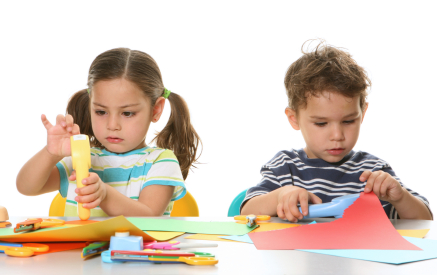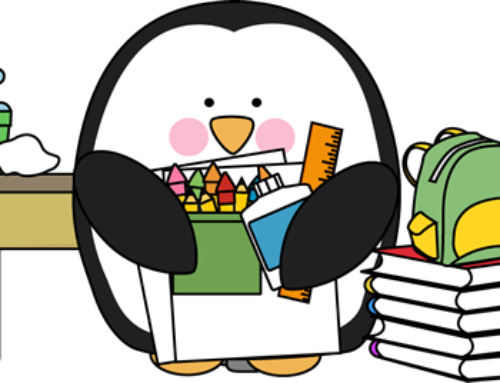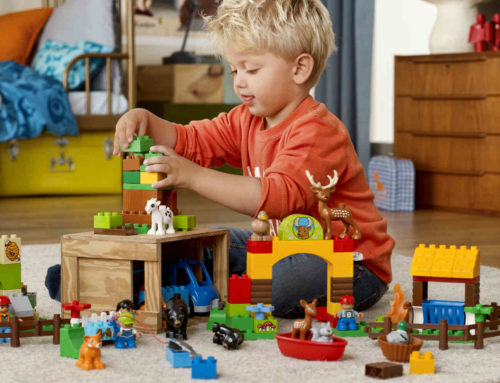I like art and craft. I can’t paint or draw but I do find colouring-in therapeutic. Doing craft with my kids however is a totally different story! I find all of these great ideas that look so simple and easy but every time I try one of them with the kids it ends in tears… usually mine. And yet, I persevere. Why you ask? Because art and craft is a fantastic way to encourage children’s language development! There are a few other reasons too. Did you know that art and craft…
- Is vital for the development of fine motor skills and visual processing skills
- Improves attention and concentration
- Increases a child’s confidence when their creations are genuinely appreciated
- Teaches a child to be patient and delay immediate gratification. In today’s society where so much happens instantly at the push of the button, it’s important for children to learn to persevere with a project in order to complete it.
How does craft encourage children’s language skills?
While doing craft activities your child is getting the chance to refine their receptive language skills (understanding what they have heard or read) by following instructions, understanding questions and demonstrating their understanding of basic concepts such as colours, sizes, shapes and locations.
They are also getting an opportunity to work on their expressive language skills (using words to express themselves) by describing what they are doing, explaining their ideas and choices and asking for help when required.
Art and craft activities also allow for the development of social communication and interaction skills (pragmatics) in a natural context. Taking turns, asking for help, complimenting the work of others and sharing ideas and experiences are all important skills children need to learn in order to be a good communicator.
This is why I make the effort to do art and craft with my little ones. We play with playdough, we draw, we use glue and we paint. It doesn’t always turn out quite how I imagined it might but that’s ok. Sometimes our version is better! And on the other 99% of occasions, the time spent having fun together makes it all worthwhile. Even if our finished (and sometimes unfinished) product leaves a lot to be desired!
If you’re looking for some inspiration here are 5 easy craft activities (with tips to encourage language development) for you to try at home…
1. Play dough
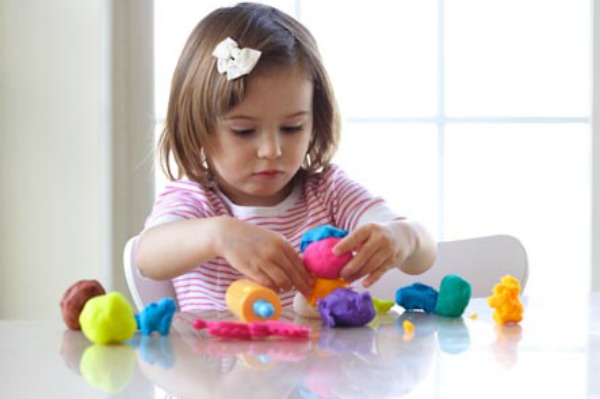 This is a great activity to increase your child’s vocabulary by adding more verbs. So many children manage to fly under the radar because they learn a few generic verbs that they use over and over such as “do” and “make”. There are so many different actions you can do with playdough! Talking about the action whilst performing it is one of the best ways for children to learn new verbs. Be specific! You will easily be able to incorporate words such as roll, cut, squash, squeeze and push into your play. But don’t stop there! Think outside the box and introduce verbs such as stretch, twist, pinch, poke, prod, knead and flatten. It’s also important to model different forms of verbs, so as you play don’t forget to say the same verbs in different ways. For example, “I’m rolling the playdough”, “Wow you rolled it into a ball”, “I will roll mine into a long snake next”.
This is a great activity to increase your child’s vocabulary by adding more verbs. So many children manage to fly under the radar because they learn a few generic verbs that they use over and over such as “do” and “make”. There are so many different actions you can do with playdough! Talking about the action whilst performing it is one of the best ways for children to learn new verbs. Be specific! You will easily be able to incorporate words such as roll, cut, squash, squeeze and push into your play. But don’t stop there! Think outside the box and introduce verbs such as stretch, twist, pinch, poke, prod, knead and flatten. It’s also important to model different forms of verbs, so as you play don’t forget to say the same verbs in different ways. For example, “I’m rolling the playdough”, “Wow you rolled it into a ball”, “I will roll mine into a long snake next”.
2. Making a collage
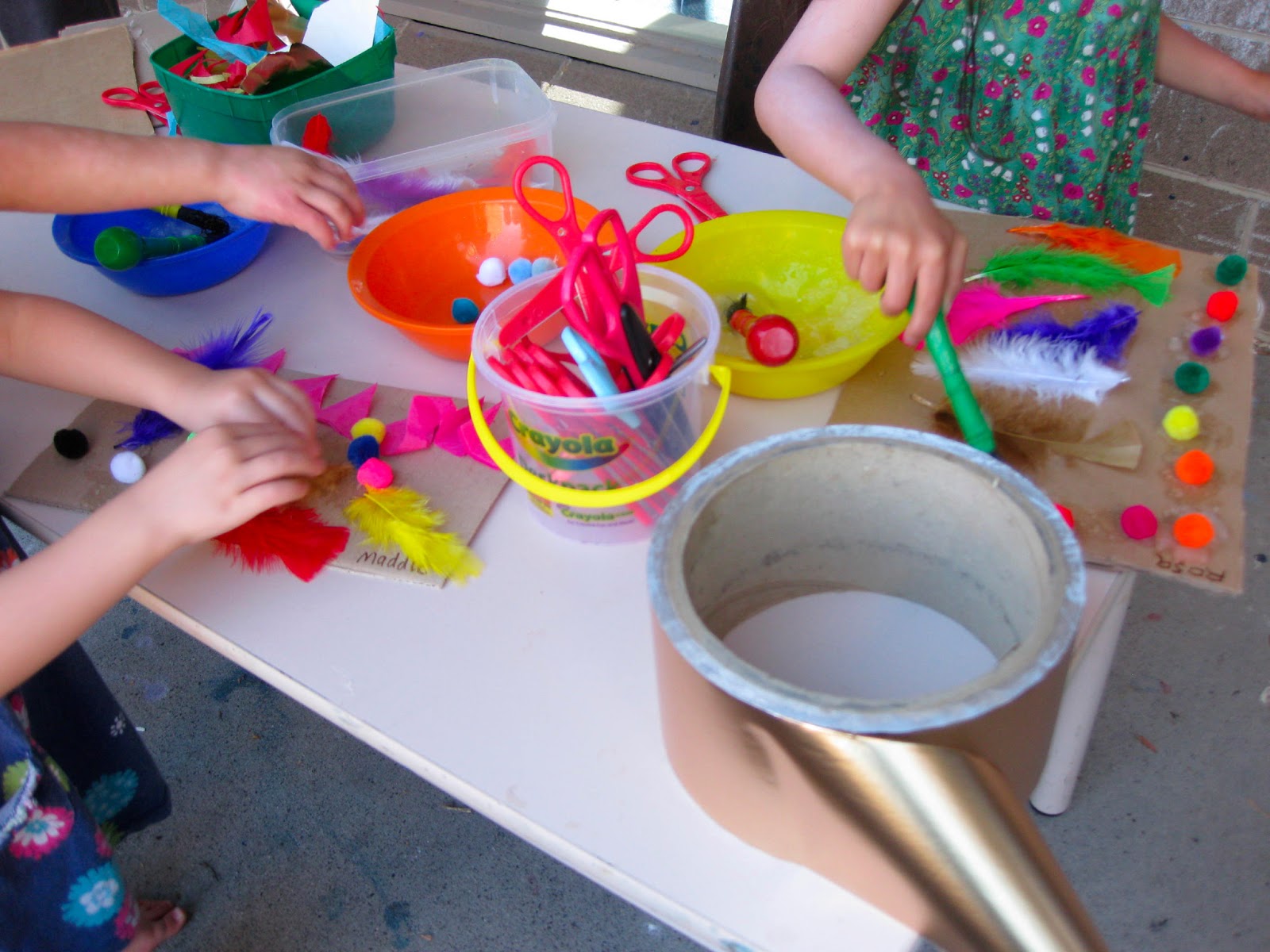 One of my favourite activities is to give my children some glue and various other items (such as feathers, pom poms, sequins, stickers, foam shapes, bits of paper, leaves, pieces of dry pasta etc) and let them go wild. This is a great way for them to talk and learn about basic concepts including spatial concepts (e.g. in front, between, above), temporal concepts (e.g. first, next, before, after) and quantity concepts (e.g. some, all, one, few, six, none). It is also an excellent way to discuss and compare adjectives such as big/small, huge/tiny, fluffy/slimy, long/short and smooth/rough. For example, “I’m going to stick the big red feather on top first and then lots of blue sparkles under it”.
One of my favourite activities is to give my children some glue and various other items (such as feathers, pom poms, sequins, stickers, foam shapes, bits of paper, leaves, pieces of dry pasta etc) and let them go wild. This is a great way for them to talk and learn about basic concepts including spatial concepts (e.g. in front, between, above), temporal concepts (e.g. first, next, before, after) and quantity concepts (e.g. some, all, one, few, six, none). It is also an excellent way to discuss and compare adjectives such as big/small, huge/tiny, fluffy/slimy, long/short and smooth/rough. For example, “I’m going to stick the big red feather on top first and then lots of blue sparkles under it”.
3. Drawing
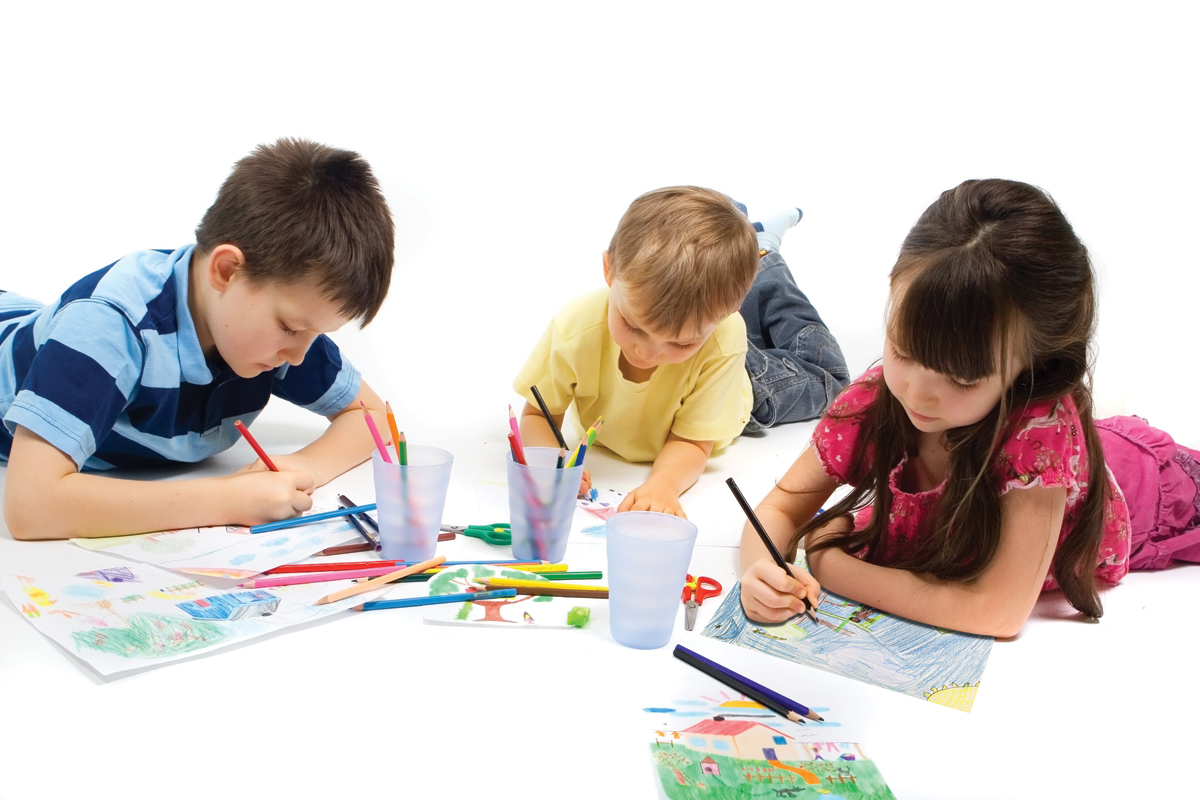 Whether it’s on paper, a chalkboard or a Magnadoodle, drawing is a great activity to help your child practise listening to and giving instructions. You might ask your child for suggestions about what to draw. Once they have given you an idea, pause and explain that you’re not quite sure how to draw that. Now it’s just a matter of being patient as you wait for your child to tell you what to do (e.g. “You draw a circle at the top for the head. Then a bigger circle under it for the body…”). If their instructions are not clear enough (e.g. draw a circle there) do not immediately correct them by telling them what to say. Instead, follow the instruction as they have explained it. When they notice the difference and tell you that you have made a mistake, repeat the instruction they gave you and ask them if they can say it a different way to help you understand better (e.g. draw a circle in the middle of the page). You can reverse the roles by giving your child instructions to follow. Start simply with just 1 direction (e.g. Can you draw me a house?) and work up to 2 or 3 part instructions (e.g. Can you draw me a house with a blue door and a red chimney?)
Whether it’s on paper, a chalkboard or a Magnadoodle, drawing is a great activity to help your child practise listening to and giving instructions. You might ask your child for suggestions about what to draw. Once they have given you an idea, pause and explain that you’re not quite sure how to draw that. Now it’s just a matter of being patient as you wait for your child to tell you what to do (e.g. “You draw a circle at the top for the head. Then a bigger circle under it for the body…”). If their instructions are not clear enough (e.g. draw a circle there) do not immediately correct them by telling them what to say. Instead, follow the instruction as they have explained it. When they notice the difference and tell you that you have made a mistake, repeat the instruction they gave you and ask them if they can say it a different way to help you understand better (e.g. draw a circle in the middle of the page). You can reverse the roles by giving your child instructions to follow. Start simply with just 1 direction (e.g. Can you draw me a house?) and work up to 2 or 3 part instructions (e.g. Can you draw me a house with a blue door and a red chimney?)
4. Cutting
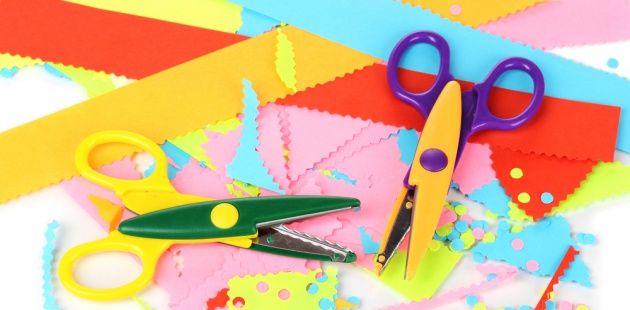 Using scissors (with supervision) can be a fun way for children to make inferences and predictions about what might happen. For example, you can fold a piece of paper in half and help your child to cut V shapes along the folded edge. Once you have done that you might ask them what kind of shapes they think they will see when you open the paper back up. Another idea if you have scissors that can cut zigzag or wavy lines, is to ask your child to close their eyes while you make some cuts using the different blades. Ask your child to open their eyes and see if they can pick which pair of scissors cut each of the lines.
Using scissors (with supervision) can be a fun way for children to make inferences and predictions about what might happen. For example, you can fold a piece of paper in half and help your child to cut V shapes along the folded edge. Once you have done that you might ask them what kind of shapes they think they will see when you open the paper back up. Another idea if you have scissors that can cut zigzag or wavy lines, is to ask your child to close their eyes while you make some cuts using the different blades. Ask your child to open their eyes and see if they can pick which pair of scissors cut each of the lines.
5. Painting
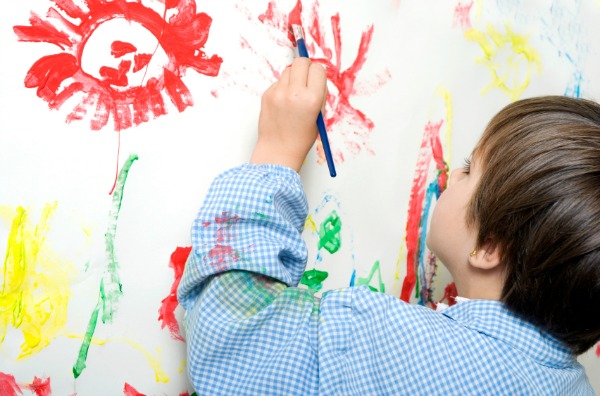
When your child proudly shows you a painting they have done, try your best not to say, “That’s great! What is it?”. Whilst we often think asking a question is a sure fire way to start up a conversation, children tend to think differently. Instead of asking a question, simply talking about what you can see (e.g “I love how you used green paint over here”) usually encourages a child to tell you more (e.g. “Yes it’s a big tree. And here’s a yellow flower”). By talking about the painting your child is getting an opportunity to use nouns such as tree and flower. This is also a perfect chance for you to add more nouns to their vocabulary by talking about parts of objects rather then purely focussing on the whole. For instance, while talking about the flower, you could talk about the petals, leaves, seeds or pollen. When it comes to talking with your children, the best thing you can do is follow their lead and talk about what they are interested in. If you start talking about the flower they painted and happen to end up in a conversation about bees collecting pollen, your child will be the better for it.
Remember…
The tips and ideas listed above can be used in any kind of craft activity. For example, you can help your child learn verbs while doing paper mache, or help them practise following instructions while threading beads. What’s more, creating something that they can see and feel makes it easier for your child to show other people what they have done and talk about it. Thus further strengthening their communication skills. Similarly, it can also be helpful to take photos at different stages throughout the activity so that your child can look back at them later to help them retell what happened.
Is it really worth it?
In short… yes. Trust me, I’m no Martha Stewart! I freely admit that doing art and craft, no matter how simple, can still feel like a lot of hard work! Sometimes setting everything up and then packing away and cleaning up the mess can take longer than actually doing the activity. The thing is, children learn the most when they are engaged and having fun. Flash cards, worksheets and even educational apps are not the most effective ways for children to learn. This is particularly true for young children who need physical experiences in order for it all to fully sink in and make sense. So… now’s the time to jump on in and give it a go! Who knows, you may even have some fun!
Don’t forget to Like Modern Speechie on Facebook for more information and tips to help children be the best communicators they can be!

